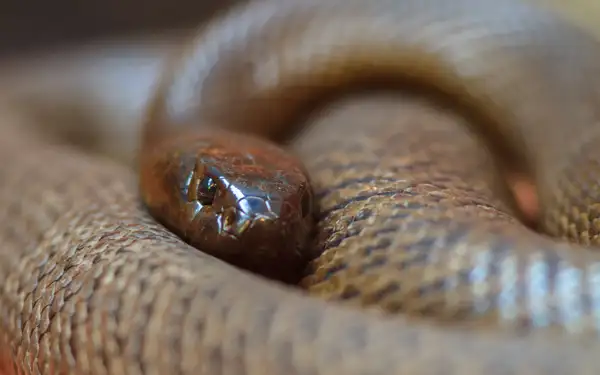Australia isn't just famous for its gorgeous opera houses, sandy beaches or colorful coral reefs, it's also cemented its reputation as home to some of the world's deadliest animals. Or, if you believe the rumors, maybe even the deadliest animal of all.

Numbers tell a different story. Australia is home to an estimated 66 venomous species, ranking lower than countries such as Brazil (79 species) and Mexico (80 species). But if it's the amount of venom in these creatures that matters - and if you find yourself bitten or stung by venom, then Australia's status as the deadliest starts to make a lot more sense. Inland taipan snakes, box jellyfish, Sydney funnel-web spiders and stonefish are among the most venomous of their kind.
Perhaps the best example of Australia's deadly animal problem is the family Ophiidae: a venomous group characterized by short fangs and an agile nature. Sixty of the 300 species of snakeskin, including taipans, coral snakes and mambas, range across Australia's land and waters. Some are smaller and shy around humans, while others are larger and eye-catching. Erapis attacks with a downward stabbing motion, killing its prey by injecting neurotoxic venom that instantly paralyzes the prey. Once bitten, the prey animal—which in the case of ophilazoans might include rodents, small birds, or even other snakes—cannot escape complete devouring. A bite from a Taipan snake releases enough venom to kill a quarter of a million rats if given the chance.
Almost all Australian snakes are venomous, as they are almost all snakes. The researchers used the theory of continental drift to explain the ancestry of this dangerous population, which suggests that Earth's continents once experienced large-scale movements away from each other. Australia's snake population was likely entirely venomous when the landmass parted. Although other continents retained populations of venomous and non-venomous snakes after continental drift, leading to the diversity of snake populations today, Australia's modern snakes have purely venomous ancestors - a legacy that has resulted in some of the most venomous snakes on Earth.
Even though Australia is home to some of the deadliest creatures on earth (we haven't even gone into detail about the Sydney funnel-web spider, whose bite releases a neurotoxin that can kill a child in 15 minutes), that's not Meaning this means Australia is actually the deadliest continent. In fact, encounters with toxic inhabitants are extremely rare. Death from such bites or stings has become even rarer with the development of antivenoms to combat the toxins of different species. Between 2000 and 2013, 41,000 people were hospitalized due to venomous insect bites or stings, of which only 64 died.
Of course, it's not just venomous species that are deadly. Neither sharks nor cassowaries have venom, and cassowaries are considered possibly the most dangerous birds in the world, thanks to the dagger-like nails on two of their six toes. Although both animals are common in Australia or its surrounding waters and are considered threatening, attacks on humans remain relatively rare. On average, shark attacks have historically claimed less than one victim per year, with between 8 and 19 non-fatal attacks per year between 2011 and 2020. Although cassowaries are more likely to come into contact with humans, with more than 200 attacks per year, there has been one cassowary-related death since the 1920s.
Does Australia deserve its deadly reputation? certainly. Especially compared to creatures from other continents, Australian animals have incredible killing abilities. But will encountering an Australian animal kill you? Probably not, unless you're hunting down and provoking an inland taipan snake in your remote desert home. While science has yet to reveal why the Sydney funnel-web spider needs to be so venomous, visitors to the continent can rest easy knowing that antivenom exists for its bite, so the hairy spider's face won't be the last they see thing. Saw it before.
animal tags:
We created this article in conjunction with AI technology, then made sure it was fact-checked and edited by a Animals Top editor.